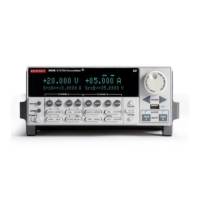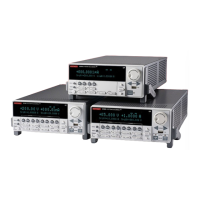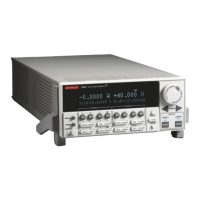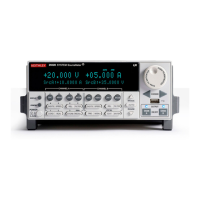System SourceMeter® Instrument Reference Manual Section 7:
2600BS-901-01 Rev. C / August 2016 7-57
Usage
triggerMode = digio.trigger[N].mode
digio.trigger[N].mode = triggerMode
The trigger mode; see Details for values
Digital I/O trigger line (1 to 14)
Details
Set triggerMode to one of the following values:
Trigger mode values
triggerMode
Description
Allows direct control of the line.
digio.TRIG_FALLING or 1
Detects falling-edge triggers as input; asserts a TTL-low pulse for
output.
digio.TRIG_RISING or 2
If the programmed state of the line is high, the
digio.TRIG_RISING mode behavior is similar to
digio.TRIG_RISINGA. If the programmed state of the line is low,
the digio.TRIG_RISING mode behavior is similar to
digio.TRIG_RISINGM. This setting should only be used if
necessary for compatibility with other Keithley Instruments products.
or
Detects rising- or falling-edge triggers as input. Asserts a TTL-low
pulse for output.
digio.TRIG_SYNCHRONOUSA or 4
Detects the falling-edge input triggers and automatically latches and
drives the trigger line low. Asserting the output trigger releases the
digio.TRIG_SYNCHRONOUS or 5
Detects the falling-edge input triggers and automatically latches and
drives the trigger line low. Asserts a TTL-low pulse as an output
digio.TRIG_SYNCHRONOUSM or 6
Detects rising-edge triggers as input. Asserts a TTL-low pulse for
output.
Detects rising-edge triggers as input. Asserts a TTL-low pulse for
output.
Asserts a TTL-high pulse for output. Input edge detection is not
possible in this mode.
When programmed to any mode except digio.TRIG_BYPASS, the output state of the I/O line is
controlled by the trigger logic, and the user-specified output state of the line is ignored.
Use of either digio.TRIG_SYNCHRONOUSA or digio.TRIG_SYNCHRONOUSM is preferred over
digio.TRIG_SYNCHRONOUS, because digio.TRIG_SYNCHRONOUS is provided for compatibility
with the digital I/O and TSP-Link triggering on older firmware.
To control the line state, set the mode to digio.TRIG_BYPASS and use the digio.writebit()
and digio.writeport() commands.
Example
digio.trigger[4].mode = 2
Sets the trigger mode for I/O line 4 to
.
Also see
digio.trigger[N].clear() (on page 7-55)
digio.trigger[N].reset() (on page 7-60)
digio.writebit() (on page 7-64)
digio.writeport() (on page 7-64)
Sweep Operation (on page 3-20)
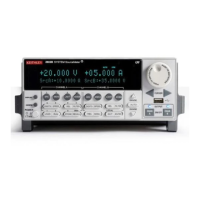
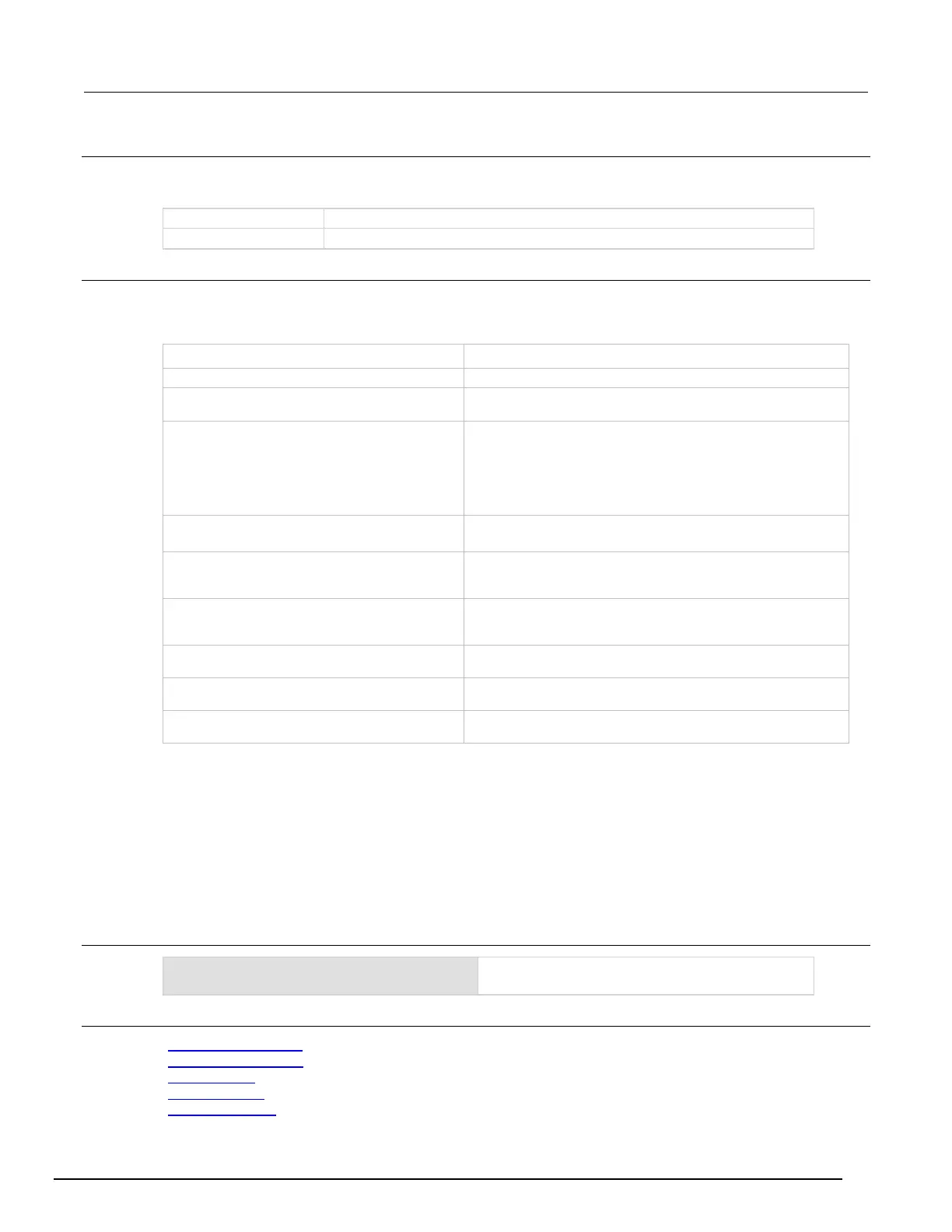